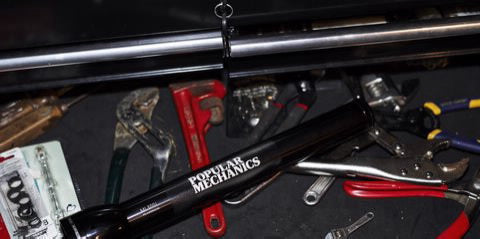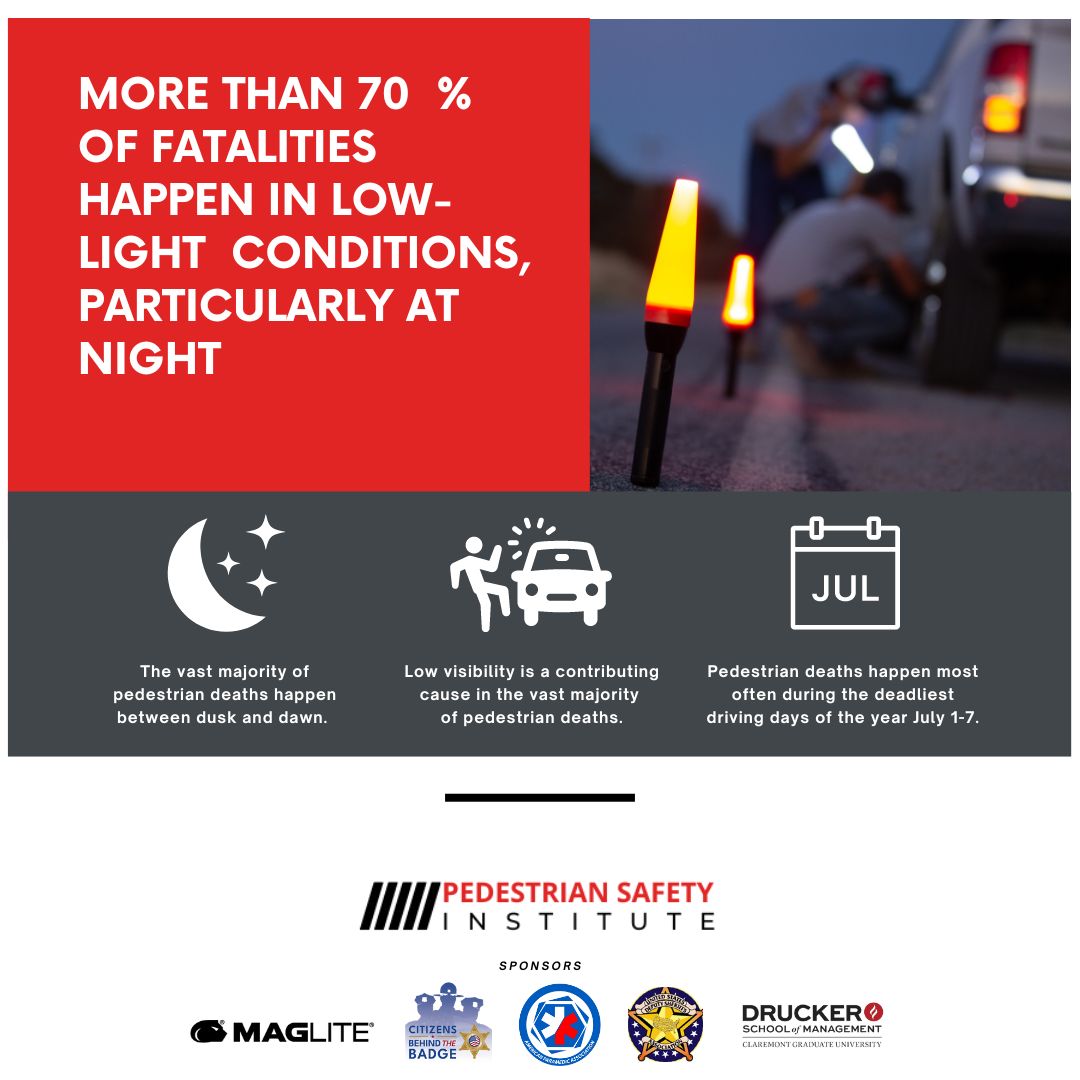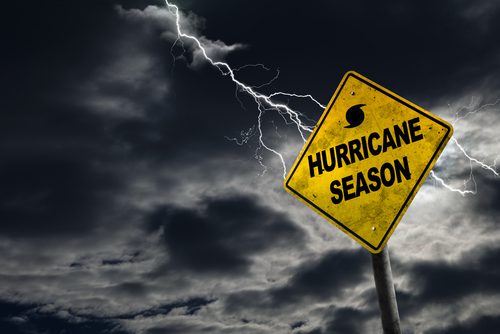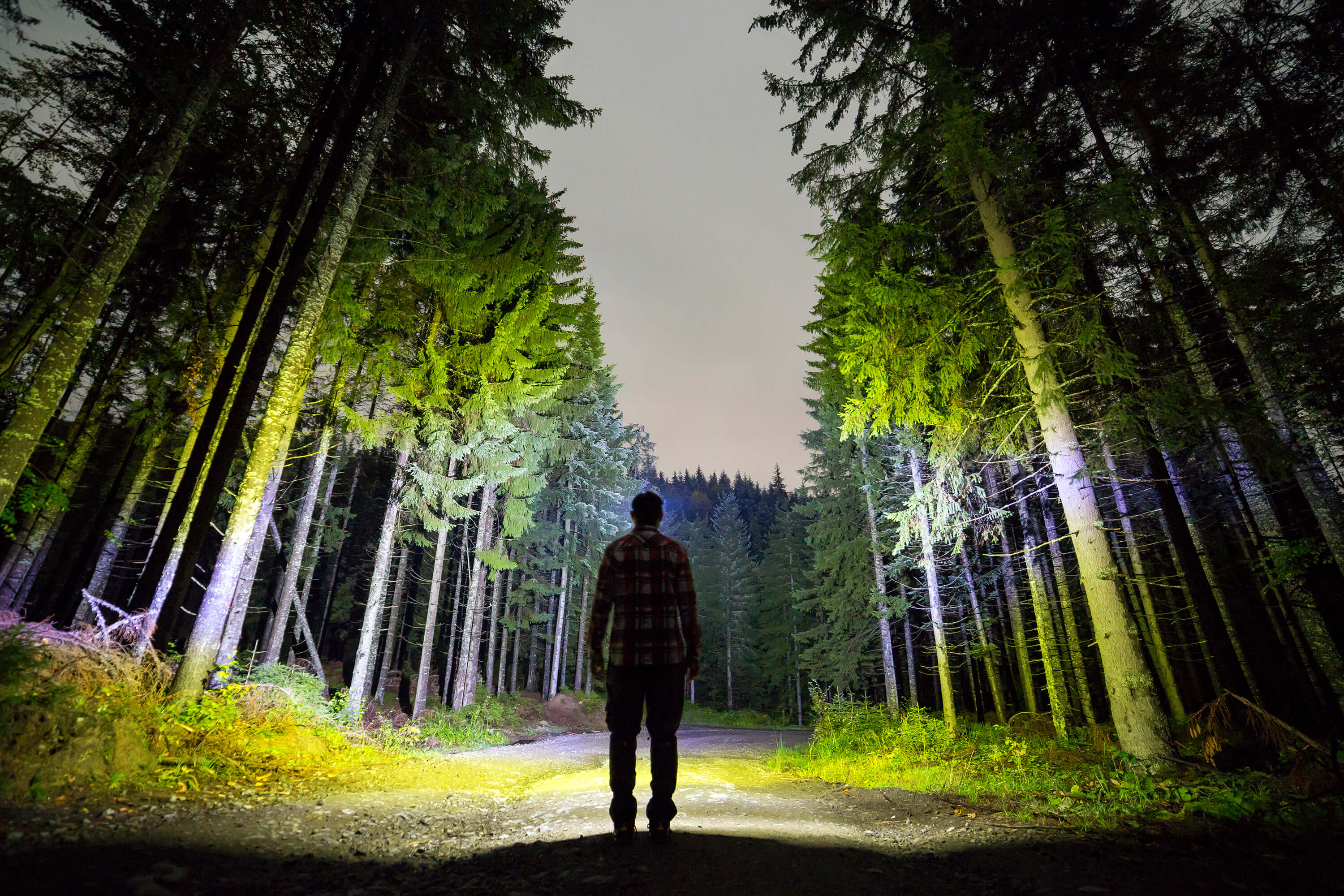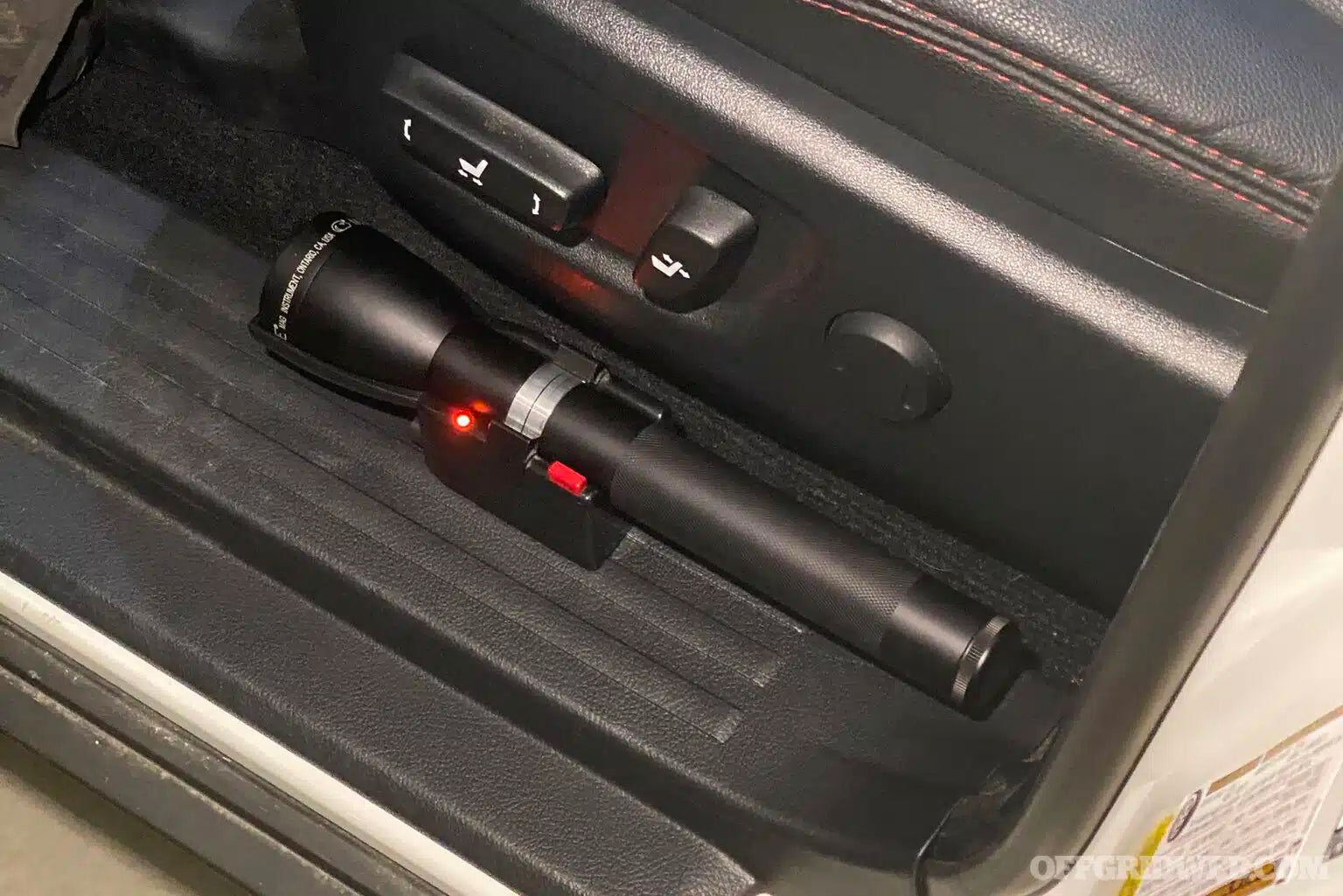The Maglite ML300L Is The Last Flashlight You Ever Need to Buy
You get 1,000 lumens in a case that's practically bombproof
BY BRADLEY FORD
MAY 11, 2020

TREVOR RAAB
The Takeaway: Maglite’s latest gives you the right amount of light for almost any situation, is manufactured in America, and offers legendary durability.
· Bright 1002 lumen beam capable of reaching 558 yards
· Five light functions: high, low, eco, momentary on, and strobe
· Drop resistant from 1 meter
· Popular Mechanics approved and co-branded
· Use code "PM20" to receive 20 percent discount
Price: $90
SHOP NOW WITH PM DISCOUNT CODE
When Maglite flashlights were introduced, over 40 years ago, they were quickly adopted by police, first responders and mechanics, establishing a reputation they have to this day. It’s no small wonder that Mag Instrument, the makers of Maglite flashlights, got its start machining precision parts for the military and aerospace industries. The durability and performance we've come to expect of Maglite is reflected in the current LED ML300L D-4. We’ve been so impressed with it that we partnered with Maglite to create a limited-edition Popular Mechanics edition with our name on it.
The “D-4” after ML300L, means the flashlight uses four D-cell batteries—Maglite suggests alkaline type. Those are the big batteries, and yes, they’re heavier than double A, triple A, or button-type batteries. On the other hand, they last a lot longer—both in runtime and shelf-life. D-cells can hold a usable charge for up to 5 years when not in use. While there are several ML300L options, the D-4 is made for people who need a durable flashlight and rely on having light when they need it. And whether that means daily, or waiting in the back of your car for the rare emergency, you won’t have to change batteries or recharge it constantly.

Our tests show the ML300L’s 1,000 lumen beam reaches 1,674 feet.
ML300L D-4 Features
· 5 light functions: high, low, eco, momentary on, and strobe
· 4 programmed function sets: general, outdoor, law enforcement, and tactical
· 511-meter beam distance
· 1002 lumens
· 5 hour, 45 minute runtime on high
· 434 hour runtime on eco
· 65407 candela peak beam intensity
· IPX4 water resistant
· 1-meter drop resistant
· Requires 4 alkaline D-cell batteries
· Weight: 2 LB
· Length 14 inches
To really get a good idea how this model performed, we tested its runtime, beam distance, water resistance, and impact resistance. We spent a few moonless nights testing the Maglite ML300L 4-D at a rural 10-acre property to see how those specs compare in real world situations.
Testing the practical beam distance of the ML300l D-4. Left: Searching for owls at 70 to 90 meters. Middle: Shining the beam across an open field to neighboring hill, 415 meters away. Right: Ponting beam down a straight section of road with multiple reflective reflective features, 576 meters.
Beam Distance to Worry the Neighbors
Maglite claims the ML300 has a beam distance of 511 meters. This is the distance a flashlight projects .25 lux—about the amount of light projected by the full moon. It is interesting to note that this distance is not actually measured, but is calculated by measuring the peak beam intensity, diving by .25 lux, and then taking the square root of the result. That’s some heavy math, so we took it into the field to verify those claims.
We went out at midnight, on a moonless night, and directed the ML300L at various points we could measure to determine practical, useful beam distance. We used the flashlight to search for owls in trees on a rural property and found we could clearly see individual branches illuminated at distances of 70 to 90 meters. We did not see any owls, but that was more a function of the chattering of the five-year old accompanying us. Next we went to an open field. Shining the light across it, we could just make out the hill where the neighboring property starts, 415 meters away. On a straight section of road with no traffic lights, we found we could identify the outlines of shapes like trees, bushes, and buildings at a distance of 576 meters. It was our impression that reflective signs, lines on the road, and the road itself reflected light that might have extended beam distance.
It is interesting to note, that although we tested in a somewhat rural area, there were neighbors within reach of the ML300L's powerful beam of light. While directing the light at various objects, we realized we had to take care to avoid shining it on houses and windows—lest someone think we were up to no good.
Impressively Long Runtime
Runtime is the amount of time it takes for the flashlight to drop from its original value at full power, with the manufacturer’s recommended battery type, to 10 percent of the original value. That is a wide range, but it’s intended to provide an estimation of useful light, rather than how long it can sustain the “original value.”
A deep, narrow reflector throws a more focused beam from the LED light.

Its D-cell batteries can hold a charge up to 5 years.
For our test, we turned the ML300L on high, started a timer and left it. Eight hours in, well past the 5:45 advertised runtime, it still gave of a surprising amount of light—more than enough to navigate complete darkness in a windowless basement. At 10 hours, it was still bright enough to shine about 100 meters outdoors at night. Finally, at 16.5 hours it had dimmed quite a bit, but still provided enough light to read a book by.
Just Enough Water Resistance
This model comes with an IPX4 rating, which means that the flashlight can withstand water splashed on it from any direction, without intrusion. IPX4 is the lowest of the water resistance ratings, with IPX7 and IPX8 being ratings for submersion—it should survive moderate rain but not falling overboard from a runaway sailboat.
To test it, we used a two and a half gallon bucket to splash water on the ML300L from the sides and each end. Then we dried the flashlight and disassembled it to see if any water made it inside—none did.
Solid construction survived our drop test, and easy operation with a single button.
Heavy-Duty Impact Resistance
A light’s beam, no matter how bright, won’t do you any good if the bulb or other critical components fail. We wanted to make sure the ML300 withstood its 1-meter rating. To test it, the American National Standards Institute (ANSI) recommends dropping the light six times at difference angles, so that's what we did.
We may have went a little overboard on this part of the test because the ML300L seemed so durable. We dropped and tossed it over 20 times from distances ranging from one to two meters. Examination of the light revealed many abrasions and gouges, but the lens and bezel remained intact, and the twist to focus functioned perfectly. Additionally, the light still functioned perfectly too, clicking through its function sets without issue. We did notice that using it some time after the test, that it would occasionally flicker and turn off. Upon inspection, we discovered that the batteries we actually damaged. The positive terminals had been dented, pushing them down and reducing the contact pressure between the batteries. Replacing the batteries solved the problem.
Conclusions: An Impressive Light, Worthy of Space in Anyone's Home
The ML300l D-4 is a high quality, durable flashlight with exceptional runtime. We found its function sets to be useful and easy to program. The practical beam distance was surprising, and the focusing capability had a larger impact the farther the beam of light was cast. With regard to beam distance, lumens are only one factor—reflector design is also important. The ML300L D-4 has a single LED in a deep, narrow reflector, as opposed to a broad, shallow one that would throw more of a spot pattern. Durability met our expectations based on previous experience and seems to significantly exceed its ANSI rating.
One of our testers has had a halogen predecessor of the ML300l 4-D for over 25 years—we checked the serial number to confirm its age—and it still functions perfectly. There are a couple differences between our tester's old flashlight and the new LED model, beyond the light source. One is the reflector—the ML300L is much deeper which helps throw light farther. The other difference is the single on/off button. On the old halogen model the rubber covered button is bigger, sits deeper in the flashlight body, and requires significantly more effort to completely depress. The button on ML300L is smaller, flatter, and easy to press, which facilitates accessing the programmed functions. Twenty-five years is a long time to hold on to anything these days, let alone a flashlight—we expect the ML300L will last just as long as the old one and likely be the last flashlight you ever need to buy.
Link to Original Article: Click Here


